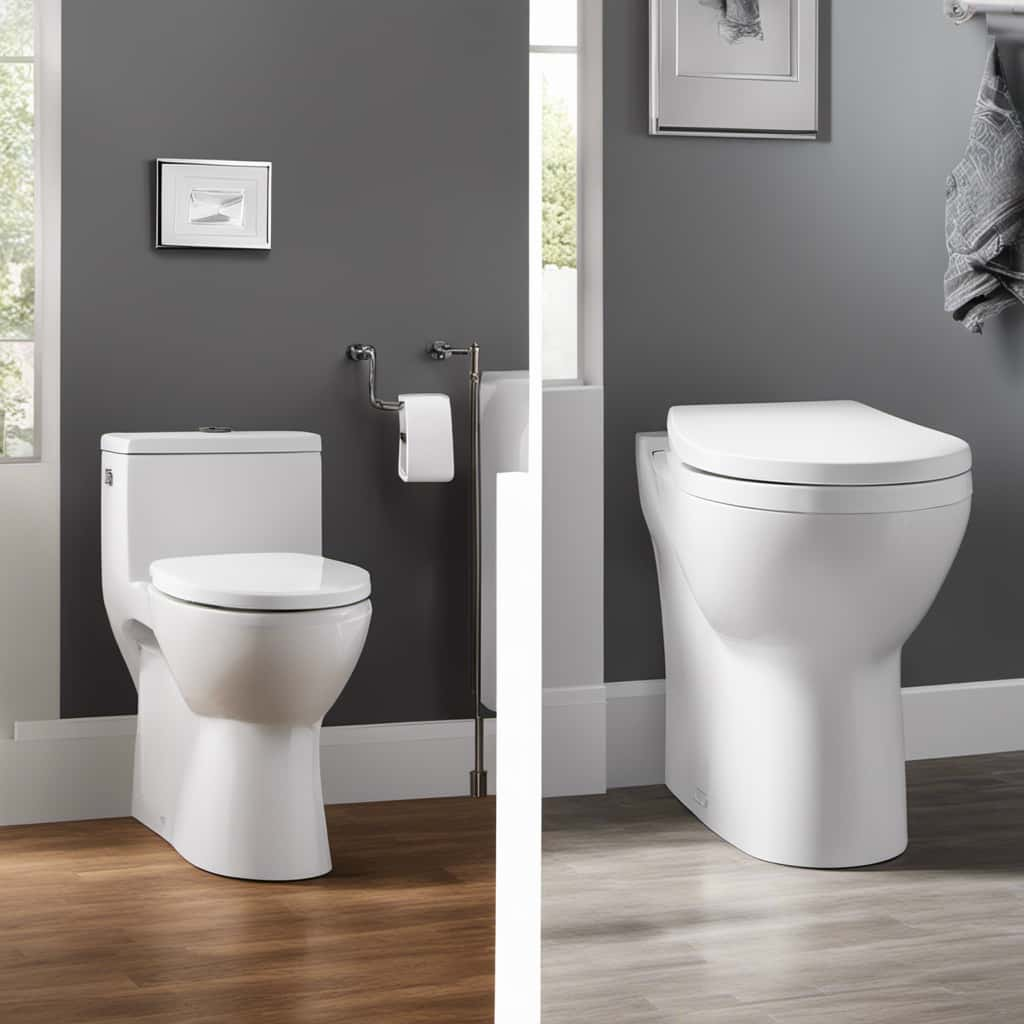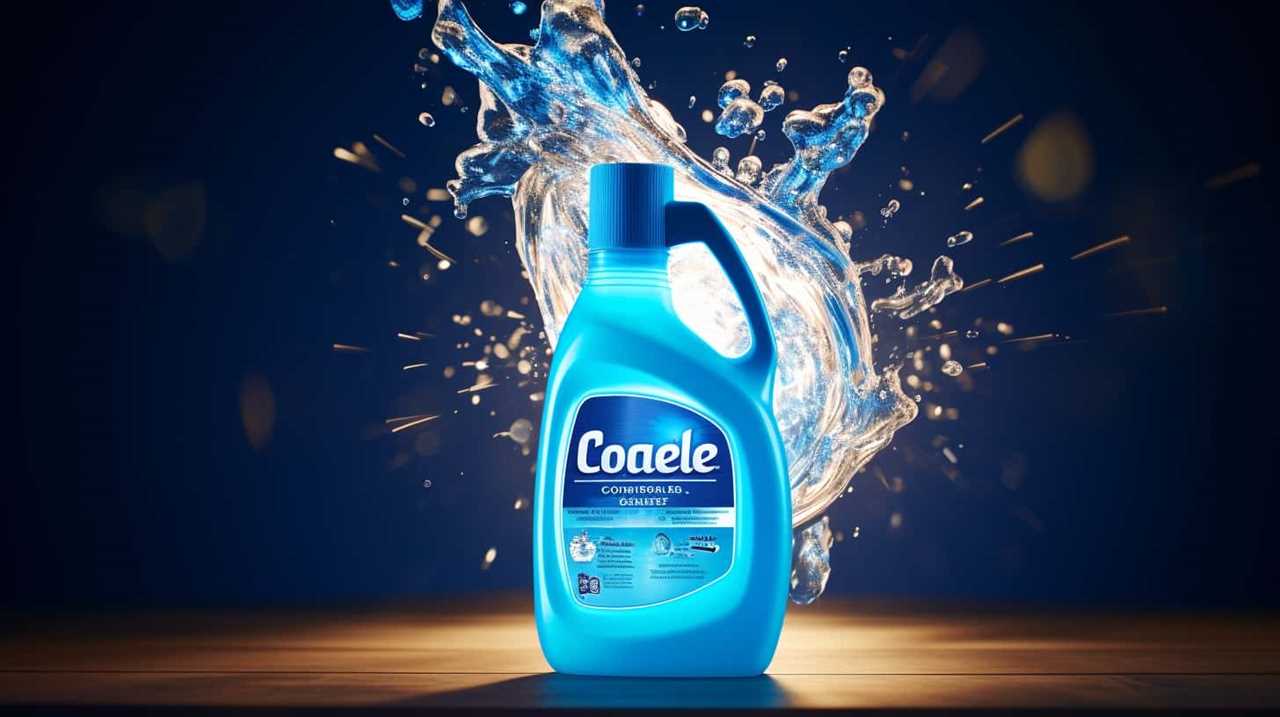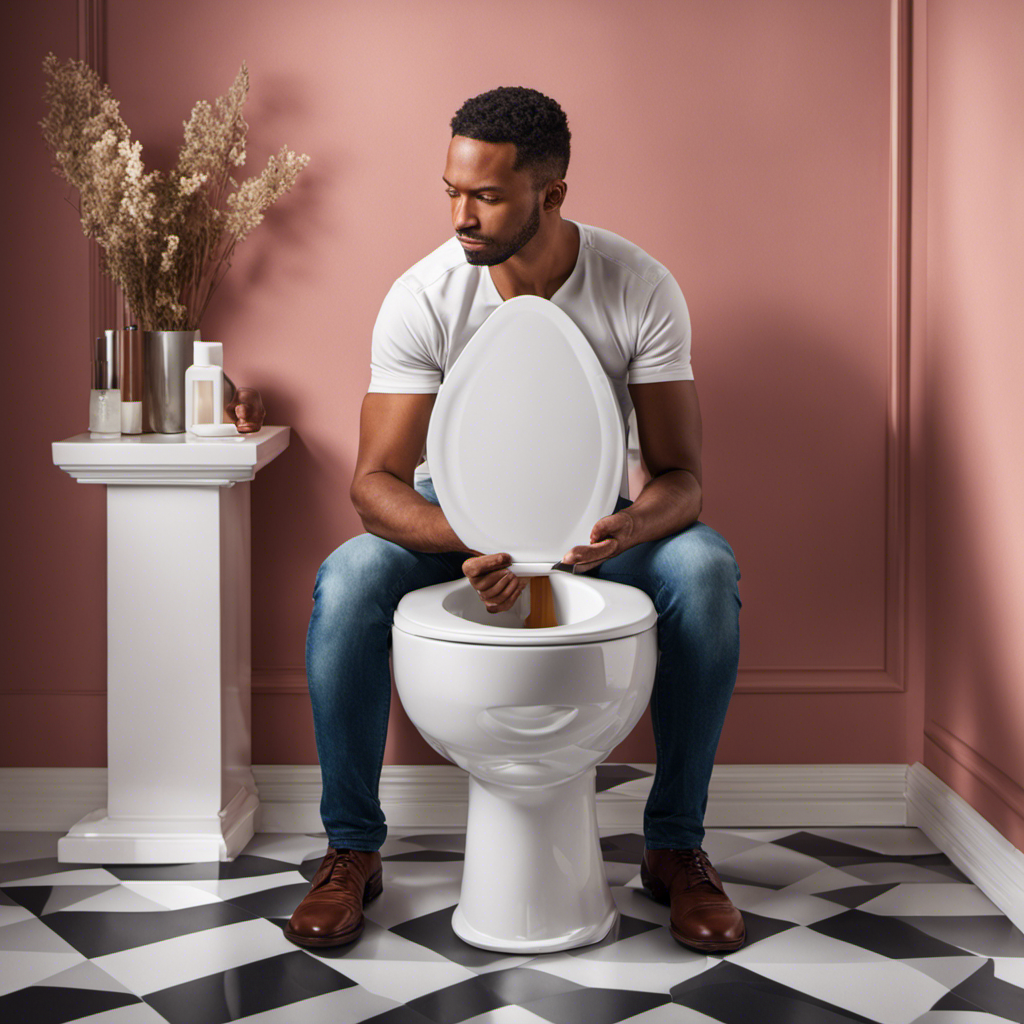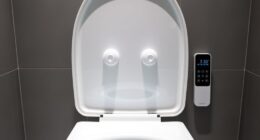We’ve all been there: standing in front of a clogged toilet, desperately praying for a miracle.
But fear not, fellow masters of the bathroom! In this concise guide, we’ll share the secrets to flushing a clogged toilet with ease.
From identifying the cause of the clog to using the right tools and materials, we’ve got you covered.
So, grab your plunger and let’s dive into the art of toilet unclogging like true connoisseurs.

Key Takeaways
- Common signs of a clogged toilet include water backing up, gurgling sounds, and foul odor.
- Use a plunger to apply pressure and dislodge the clog.
- If the plunger doesn’t work, use a toilet auger to break up the blockage further down the drain pipe.
- Only flush toilet paper and human waste to prevent future clogs.
Identify the Cause of the Clog
First, we frequently inspect the toilet to identify the cause of the clog. Common signs of a clogged toilet include water backing up or not draining properly, gurgling sounds, and a foul odor.
To determine the cause, we start by visually examining the toilet bowl to check for any visible obstructions such as excessive toilet paper or foreign objects.
Next, we use a plunger to apply pressure and attempt to dislodge the clog. If this doesn’t work, we may need to use a toilet auger to break up the blockage further down the drain pipe.
To prevent future toilet clogs, it’s important to only flush toilet paper and human waste. Avoid flushing items like baby wipes, feminine hygiene products, or excessive amounts of toilet paper.

Additionally, regular maintenance such as occasional plunging and periodic drain cleaning can help prevent clogs from occurring.
Gather the Necessary Tools and Materials
To gather the necessary tools and materials for unclogging a toilet, we’ll need:
- Plunger: A plunger is a basic tool used to create pressure and force out the clog. It’s important to choose a plunger with a flange, as it provides a better seal and increases the success rate of unclogging.
- Toilet Auger: A toilet auger, also known as a closet auger, is a specialized tool designed for clearing stubborn clogs deep within the toilet drain. It features a long, flexible cable that can navigate through the trapway and break up the blockage.
- Protective Gloves: When dealing with toilet clogs, it’s crucial to protect yourself from potential bacteria and germs. Wearing protective gloves will prevent any direct contact and ensure your safety during the unclogging process.
Try Using a Plunger to Unclog the Toilet
After gathering the necessary tools and materials, we can now move on to using a plunger to unclog the toilet.
Plungers are an effective tool for clearing toilet clogs and should be your first line of defense. To begin, ensure that the plunger’s rubber cup fits securely over the drain hole in the toilet bowl. Create a tight seal by pressing down firmly.

Next, using an up-and-down motion, push and pull the plunger vigorously to create suction and dislodge the clog. Be patient and persistent, as it may take several attempts before the clog is cleared.
If traditional plunger techniques don’t work, there are alternative methods to consider. In the next section, we’ll explore how to use a toilet auger for stubborn clogs.
Use a Toilet Auger for Stubborn Clogs
To tackle stubborn clogs, we recommend using a toilet auger, a tool that can effectively clear blockages in the toilet drain. A toilet auger consists of a long, flexible cable with a coiled end and a handle for easy operation.
Here are three reasons why a toilet auger is a great option for dealing with stubborn clogs:

- Superior reach: A toilet auger can reach deep into the drain, ensuring that the blockage is completely cleared.
- Minimal mess: Unlike plungers, which can sometimes cause splashing and mess, a toilet auger allows for a cleaner and more controlled process.
- Versatility: Toilet augers can be used for various types of clogs, including those caused by solid waste, paper products, or even foreign objects.
By using a toilet auger, you can effectively unclog your toilet and restore its proper functionality. However, prevention is always better than cure. To avoid future clogs, be mindful of what you flush down the toilet and consider using toilet auger alternatives, such as regular maintenance with enzymatic cleaners or installing a bidet attachment.
When faced with stubborn clogs that can’t be cleared with a toilet auger, it may be necessary to consider using natural or chemical drain cleaners.
Consider Using Natural or Chemical Drain Cleaners
When faced with stubborn clogs that cannot be cleared with a toilet auger, we should consider using natural or chemical drain cleaners. Natural drain cleaners can be an effective and environmentally-friendly option for clearing clogs. They typically use ingredients like enzymes or bacteria to break down organic matter and clear the blockage. However, natural drain cleaners may take longer to work and may not be as effective on tough clogs. On the other hand, chemical drain cleaners contain powerful ingredients like bleach or sulfuric acid that can quickly dissolve clogs. However, they can be harsh on pipes and may pose health risks if not used properly.
To provide a visual representation of the pros and cons of natural and chemical drain cleaners, here is a table:

| Natural Drain Cleaners | Chemical Drain Cleaners |
|---|---|
| Pros: | Pros: |
| – Environmentally-friendly | – Quick and effective |
| – Safer for pipes and septic systems | |
| Cons: | Cons: |
| – May take longer to work | – Harsh on pipes |
| – Less effective on tough clogs | – Health risks if not used properly |
In addition to using drain cleaners, it’s important to know how to prevent toilet clogs naturally. This can be done by avoiding flushing excessive amounts of toilet paper or items that are not meant to be flushed, such as wipes or feminine hygiene products. Regular maintenance, such as periodically pouring boiling water or vinegar down the toilet, can also help prevent clogs. By taking these preventive measures, we can minimize the need for drain cleaners and keep our toilets running smoothly.
Frequently Asked Questions
Can I Use a Plunger on a Clogged Sink or Bathtub Drain?
Yes, we can use a plunger on a clogged sink or bathtub drain. It’s one of the alternative methods for unclogging them, along with using a snake.
Are There Any Specific Safety Precautions I Should Take When Using a Toilet Auger?
Toilet auger safety precautions are important. When using a toilet auger, we need to follow proper technique to avoid injury. Let’s discuss how to use a toilet auger safely and effectively.
Can I Use a Homemade Drain Cleaner Instead of Purchasing a Chemical One?
Yes, you can use a homemade drain cleaner as an alternative method for unclogging toilets. However, the effectiveness may vary, and it’s important to consider the specific ingredients and their potential impact on your plumbing system.

What Should I Do if Using a Plunger and a Toilet Auger Doesn’t Unclog the Toilet?
If using a plunger and a toilet auger doesn’t unclog the toilet, we can try alternative methods like using hot water or a drain snake. If all else fails, calling a professional is recommended.
Is There Any Risk of Damaging the Toilet or the Plumbing System When Using Chemical Drain Cleaners?
Toxicity concerns are associated with chemical drain cleaners. Eco-friendly alternatives can be used to avoid damaging the toilet or plumbing system. We recommend exploring safer options, such as using a plunger or a toilet auger.
Conclusion
In conclusion, unclogging a toilet can be a simple task if you identify the cause of the clog and use the right tools and materials.
A surprising statistic reveals that 80% of toilet clogs can be resolved using a plunger, making it an effective and accessible method.

However, for stubborn clogs, a toilet auger might be necessary.
Consider using natural or chemical drain cleaners as a last resort.
Remember to always exercise caution and follow safety guidelines when dealing with toilet clogs.










